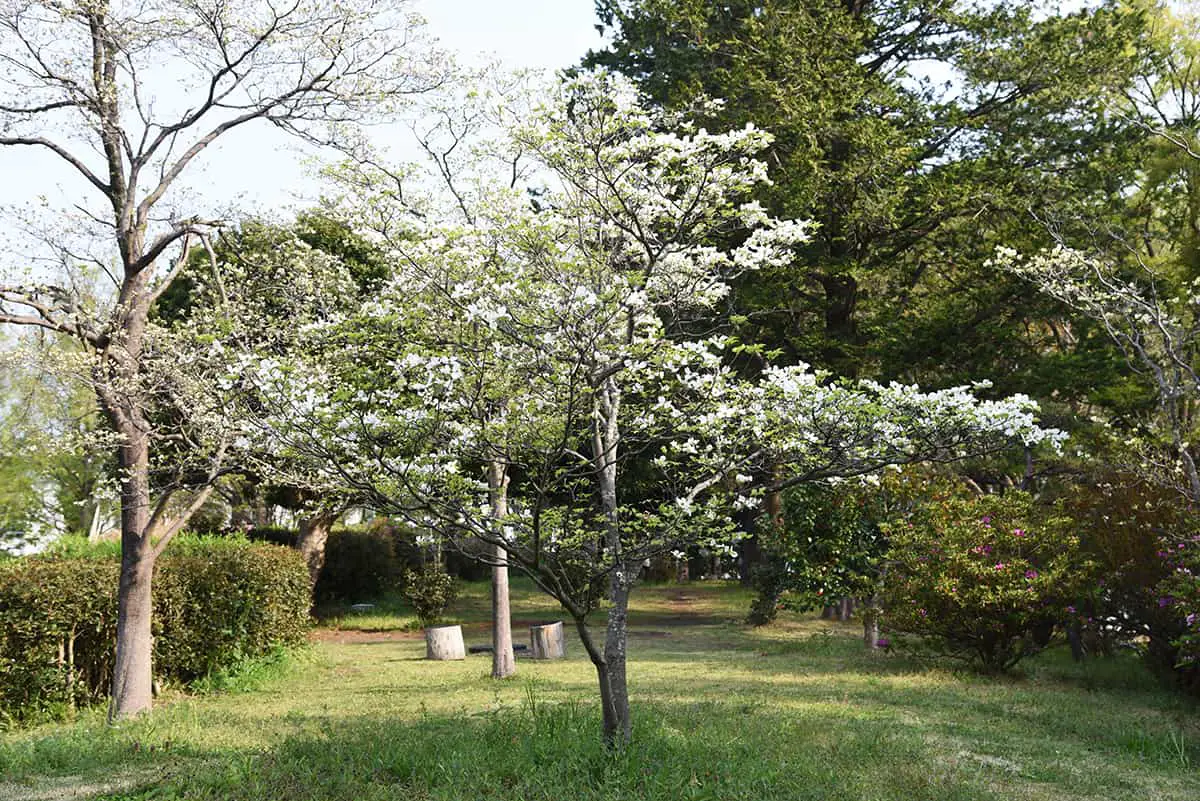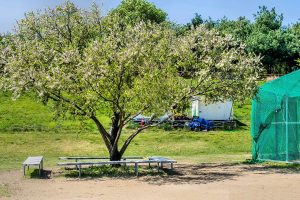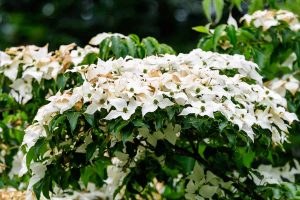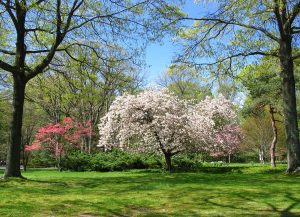The best time to plant a dogwood tree is the same regardless of which type of dogwood tree you have. Dogwood trees belong to the Cornus family, which encompasses a wide range of trees and shrubs, and all of these species will have the best chance of thriving if they are planted during fall, winter, or very early spring.
Here we investigate the reasons why dogwood should be planted during these seasons and share tips on planting dogwood trees.
Table of Contents
When to Plant Dogwoods
Dogwood trees can be planted at any time of year, but they have a much greater chance of survival if planted during the fall, winter, or early spring. The University of Tennessee recommends that November and December are the best months for planting dogwood trees. There are a number of reasons for this.
Dormancy
First of all, dogwood trees are dormant during fall and winter, and therefore their roots will be preserving energy rather than actively growing. By planting them during this time, they are able to slowly get used to their new surroundings before their rapid growth period the following spring.
Soil Condition
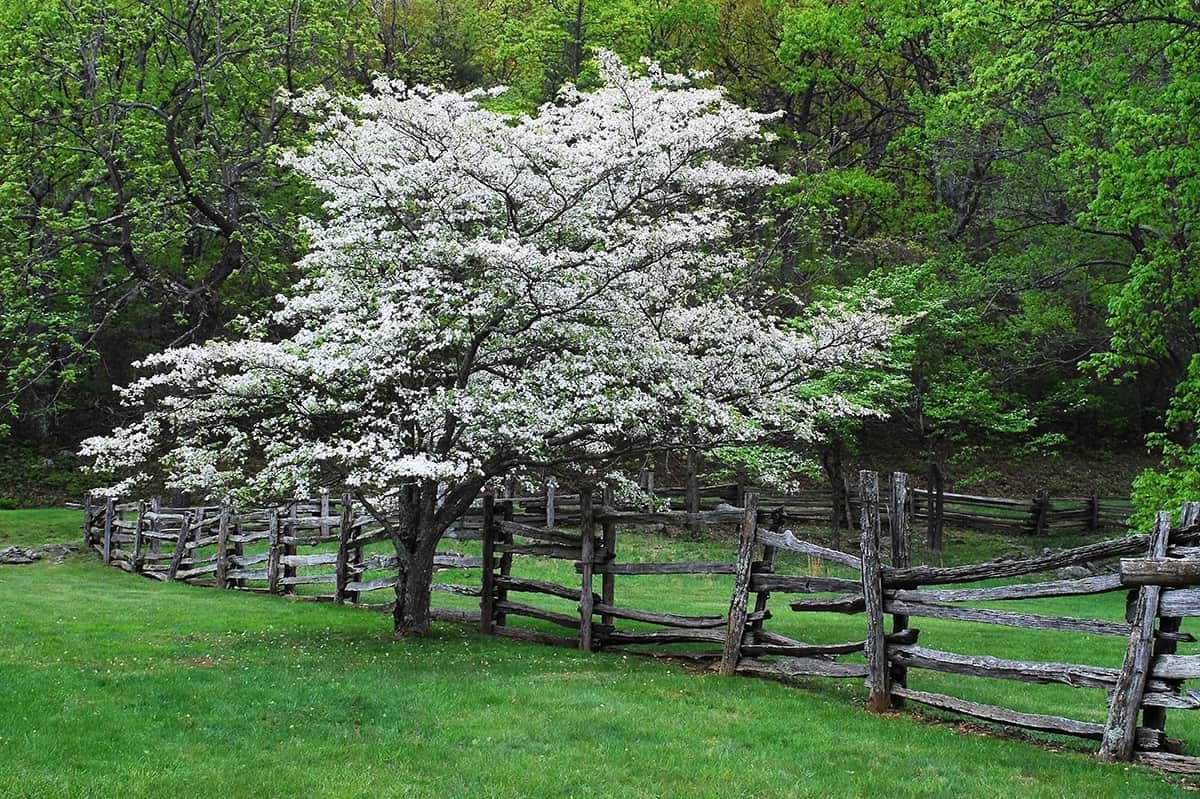
The condition of the soil is optimal during late fall or very early spring. During these times of the year, the soil should not have frozen, and it should not be so wet that the structure of the soil is negatively affected.
It will be easy to work with in terms of digging a hole big enough to accommodate the root ball of the dogwood. The condition of the soil will make it both easier to plant the dogwood during this time, and it will enable the roots of the dogwood to settle in more easily.
Minimal Care
When planted in fall or winter, the dogwood can simply be tucked into the soil and left until the following spring.
The plant won’t need large amounts of moisture during this time because it will be in its dormant phase, and any moisture it does need will be supplied by rainfall. This means that by planting dogwood in fall or winter, you make it a much lower maintenance process than if you plant it during spring or summer.
Minimize Vulnerability
Dogwood trees can be vulnerable to high levels of sunlight and heat when they are young, and this can cause scorch to the foliage or cause the plant to weaken.
Planting a dogwood tree during summer when it has to contend with these weather conditions can make it even more vulnerable. You can help your dogwood tree to cope with heat and light by planting it in fall or winter because this will allow the root system to establish itself in the new soil and increase its overall strength before the summer rolls around.
Can You Plant Dogwood in Summer?
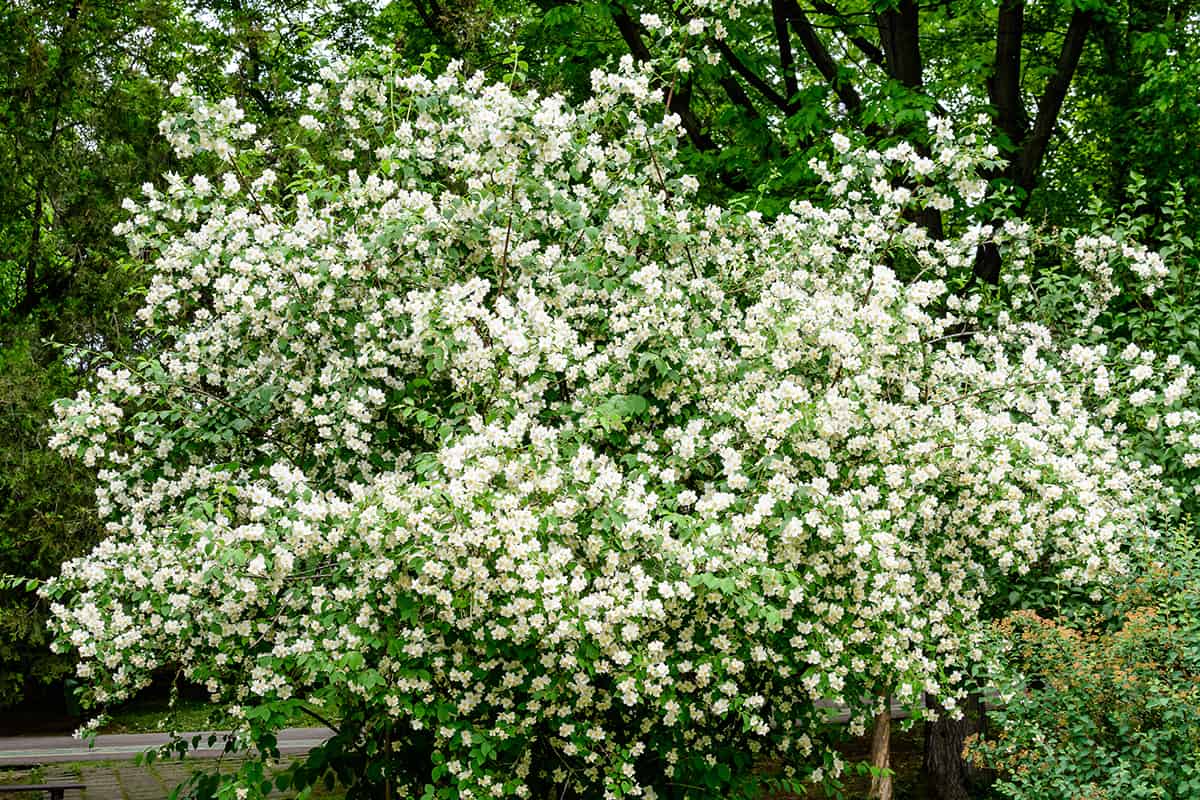
Dogwoods can technically be planted at any time of year, however, summer is known to be the least appropriate time to plant a dogwood. If you plant your dogwood tree during the summer months, you will have to pay close attention to the moisture content of the soil.
The tree will likely need to be watered every day, though take care to avoid making the soil wet and soggy. The dogwood may also need protection from high levels of light and heat.
Planting Tips for Dogwood Trees
Knowing how to plant your dogwood tree is essential, along with knowing when to plant your dogwood. Following these tips will help you gain insight on how to best prepare for planting and how to carry out this gardening task.
Bare Root Dogwood Trees
Bare root dogwood trees are typically only sold in late fall and early winter since they have low chances of survival when planted outside of these timeframes. When you buy a bare-root dogwood tree, it is essential that you keep the roots moist and plant the tree in the ground as soon as possible.
You can keep the root ball moist by wrapping it in wet paper towels, but ideally, it should be taken right from the garden center to a hole in the soil in your garden.
The longer the tree is kept out of the ground, the lower the chances of survival. When planting the bare root dogwood tree, ensure you add plenty of water to help it settle into the soil, and then leave it to acclimate to its new surroundings.
Potted Dogwood Trees
Potted dogwood trees are less vulnerable than bare-root dogwood trees, and these don’t need to be planted quite so urgently. Your potted dogwood can remain in the pot for several weeks as long as you water it and keep it in an appropriate position in terms of lighting and temperature.
Potted dogwoods fare best when planted during fall and winter, but they can also be planted in spring and summer with a good level of success.
Choose Dogwood Wisely
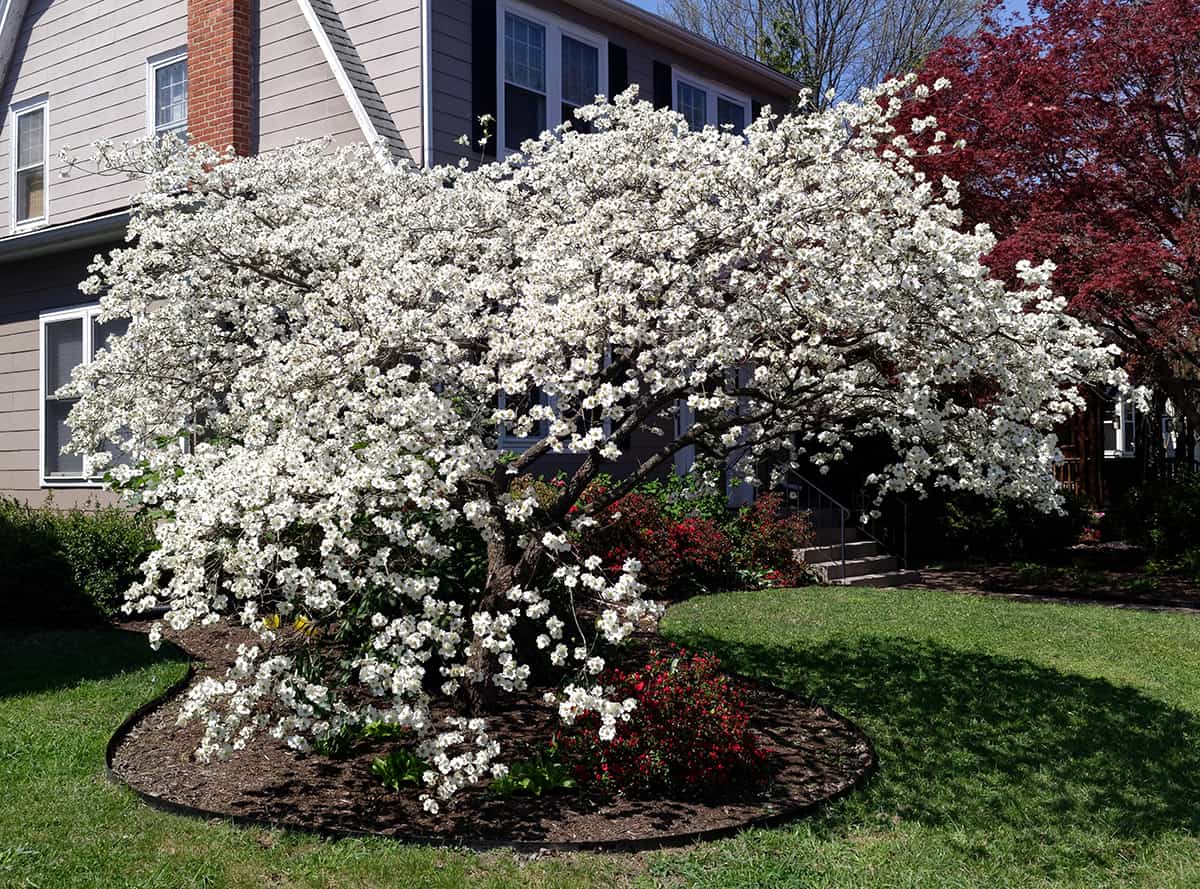
It is not recommended to transplant dogwood trees from woodlands or to propagate stems from wild specimens since there is a high risk of spreading disease in this way. Instead, source your dogwood trees from reputable nurseries and garden centers.
Amend Soil
Dogwood trees thrive in a number of different soil types, depending on the type of dogwood you have. Most prefer a neutral to acidic type of soil, though they will adapt to other soil pH levels if amending your soil pH is not possible. Most importantly for dogwoods is that their soil is well draining and moisture retentive.
If your soil is heavy in clay and therefore doesn’t drain well, you can improve drainage by adding sand. If your soil is too sandy or gravelly and therefore drains too freely, you can amend the soil by adding organic compost, which will improve moisture retention.
Dogwood trees thrive in soils that are rich and dense in organic content, so mixing compost, leaf mold, or well-rotted manure into the soil before planting the dogwood is all a good idea.
